New in DHS-8: Updates to Immunization Indicators
In 2019, The DHS Program released updated questionnaires for the eighth phase of The DHS Program (DHS-8) to better meet existing and emerging data needs in global health. This “New in DHS-8” series draws attention to new indicators, changes made to existing indicators, and other things DHS Program data users should be aware of when accessing DHS-8 final reports and datasets.
April 24-30th is World Immunization Week, and this year is the 50th anniversary of the Expanded Programme on Immunization (EPI), an initiative launched by the World Health Organization (WHO) in 1974 to ensure equitable access to life-saving vaccines for every child. Since the beginning of The DHS Program in 1984, DHS surveys have included questions about children’s immunization to help countries measure vaccination coverage. Vaccination indicators have been updated for DHS-8 surveys based on data needs of countries that implement DHS surveys and to align with a white paper on vaccination coverage measures in household surveys commissioned by the EPI in 2019.
NEW: Source of vaccination
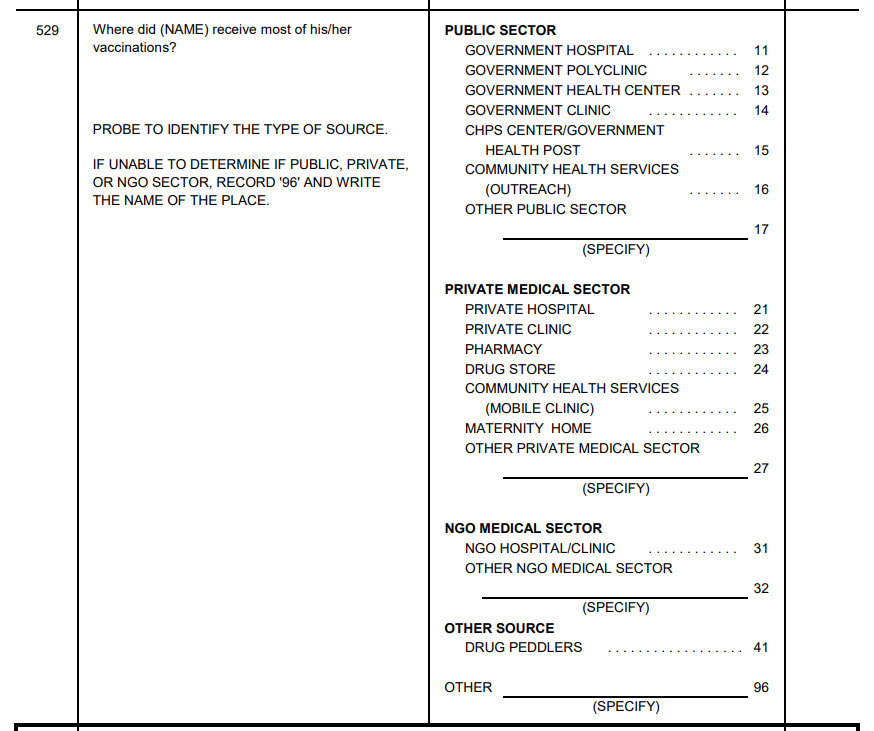
A new question about source of vaccination has been added to the DHS-8 woman’s questionnaire. Now, women are asked where their child received most of their vaccinations. In Ghana, 93% of children age 12-23 months receive vaccinations from public sector sources and 7% from private sector sources. Receiving vaccines from a private non-NGO source generally increases as household wealth increases in Ghana.
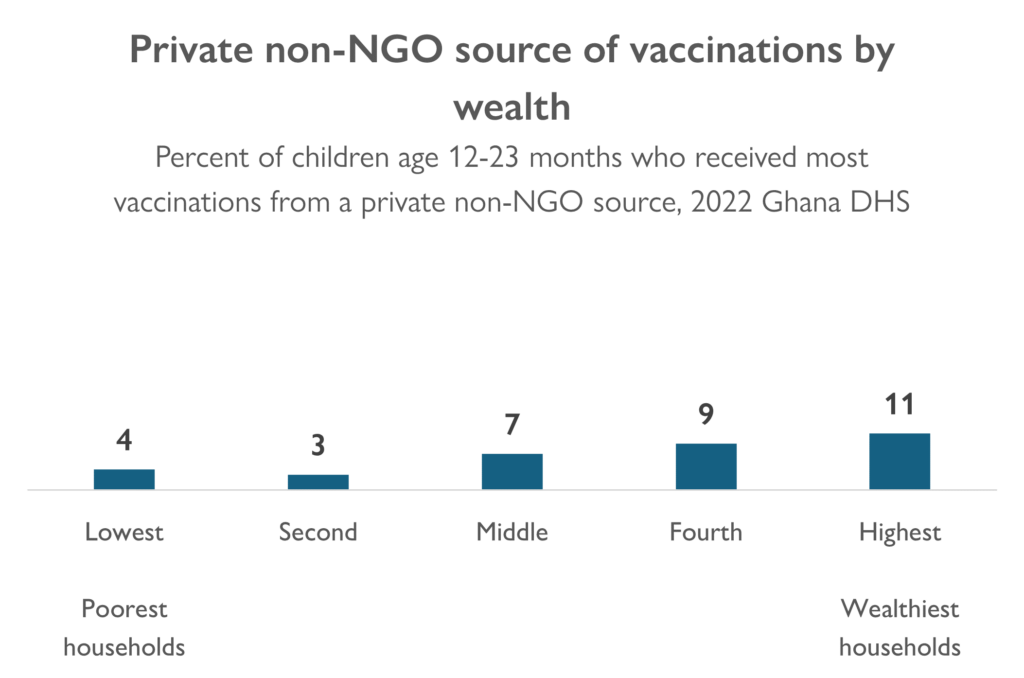
UPDATED: Fully vaccinated (basic antigens)
The percent of children receiving all “basic” antigens has been an important measure of vaccination coverage since the EPI launched in 1974. Children are considered fully vaccinated against basic antigens if they have received the Bacillus Calmette-Guérin (BCG) vaccine, three doses of polio vaccine (excluding polio 0, a dose given at birth) , three doses of diphtheria, pertussis, tetanus (DPT)-containing vaccine, and a single dose of measles-containing vaccine.
In DHS-7, the indicator for children age 12-23 months who received all basic antigens was called all basic vaccinations. In DHS-8, this same indicator has been re-named as fully vaccinated (basic antigens). Because the antigens that make up this indicator have not changed over time, it is appropriate both for exploring trends and making cross-country comparisons.
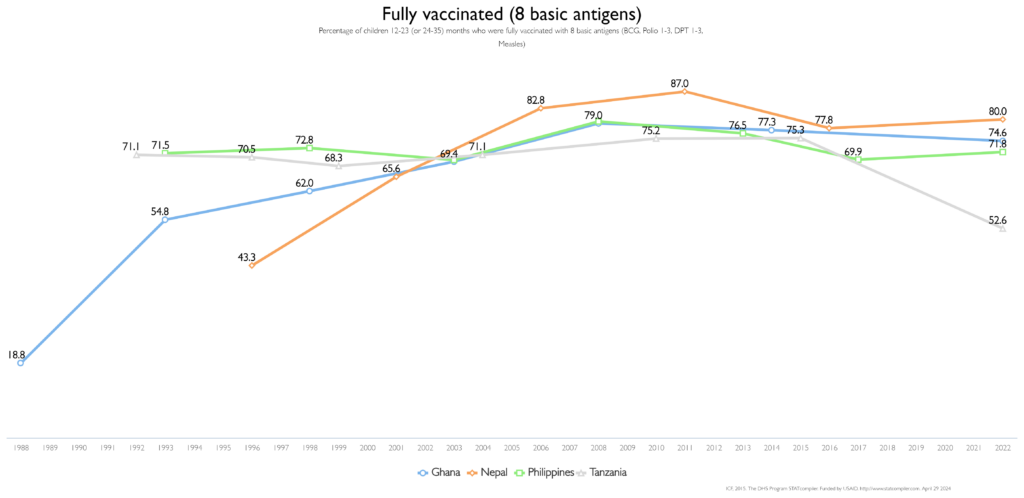
UPDATED: Fully vaccinated (according to the national schedule)
To help countries measure the percent of children who received the full package of routine vaccinations, the EPI recommends reporting the indicator: fully vaccinated (according to the national schedule). In DHS-7, this indicator was described as the percent of children who received all age appropriate vaccinations; in DHS-8, the indicator was renamed fully vaccinated (according to the national schedule) and is reported for children age 12-23 months and 24-35 months. Data users should analyze trends with caution since a country’s national vaccination schedule may have changed between surveys. Data users should also take note of when vaccines were added to the national schedule, as it could be the case that not all children in these age groups were eligible to receive newer vaccines at the time they were introduced.
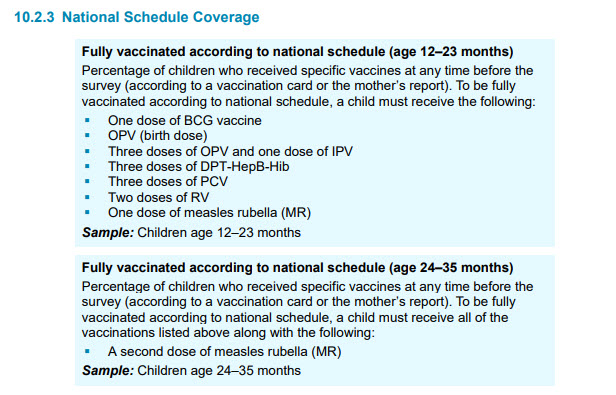
The final report for each DHS-8 survey defines the vaccines and the number of doses included in the national vaccination schedule for that country. The national schedule varies from one country to another so data users should make cross-country comparisons with caution. National vaccination schedules for children age 12-23 months in both Nepal and Tanzania include BCG, three doses of DPT-HepB-Hib, three doses of pneumococcal conjugate, two doses of rotavirus, and measles-rubella. Nepal’s national schedule also includes two doses of fractional inactivated polio vaccine and one dose of Japanese encephalitis, while Tanzania’s national schedule includes a birth dose of oral polio vaccine and one dose of inactivated polio vaccine.
NEW: More information on vaccination cards
When collecting information on vaccinations in a DHS survey, interviewers ask the child’s mother if the child ever had a vaccination card, booklet, or other home-based record. If yes, the interviewer asks to see and use the vaccination record to complete the questionnaire. If no, the interviewer asks the mother whether her child received each vaccination on the schedule and if she can recall the number of doses received.
The source of vaccination information is presented as a background characteristic in the tabulation. In DHS-7 there were two categories. Now in DHS-8 categories have been further split into separate options for “not seen or no longer has” and “never had” a vaccination card.
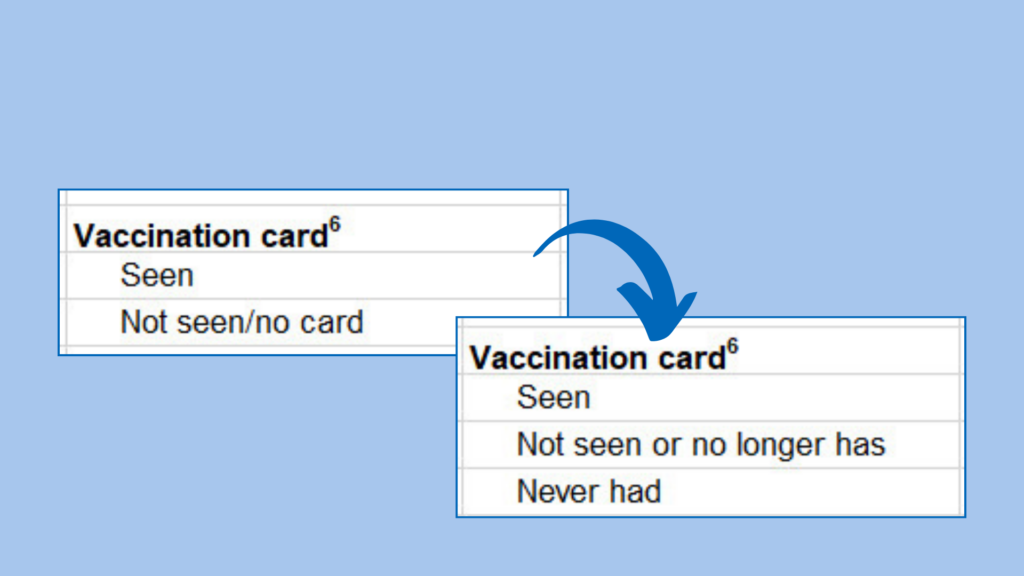
In the Philippines, we can clearly see that there is variation in vaccination coverage by the vaccination card background characteristic: among children age 12-23 months whose vaccination card was seen, 90% are fully vaccinated (basic antigens), compared to 46% of those whose card was not seen or is no longer in their possession, and 8% of children who never had a vaccination card. The quality of data collected directly from seeing a vaccination card is generally better than that based on mother’s recall, and therefore the source of the vaccination data may in part explain the difference in coverage.
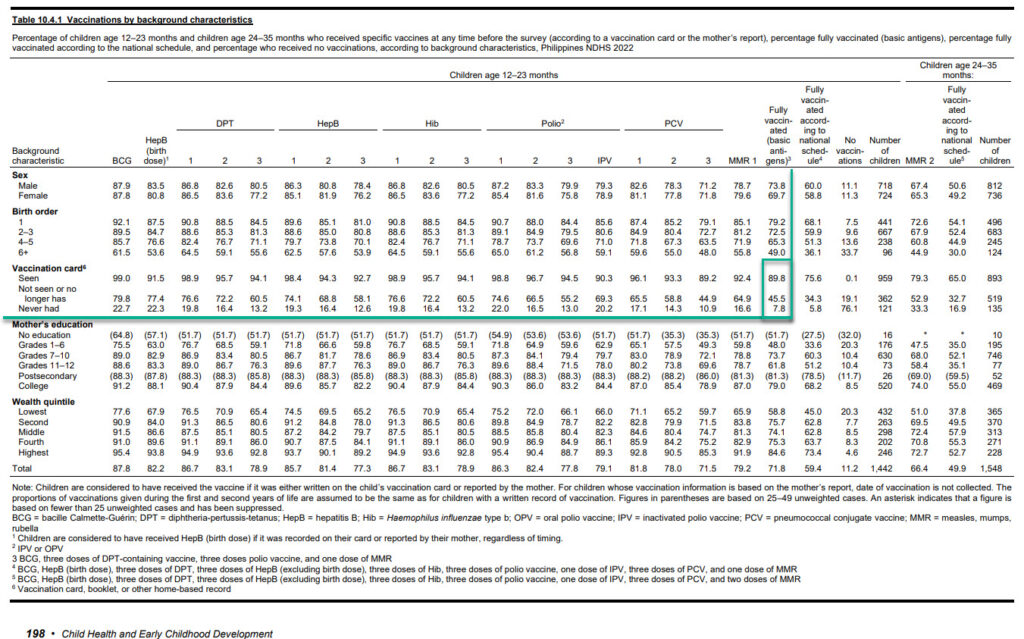
DHS data support health programmers to strengthen routine immunization initiatives, protect future generations from vaccine-preventable diseases, and improve health and well-being in countries worldwide.
Feature image: © Rawpixel, Adobe Stock

